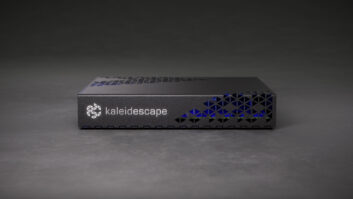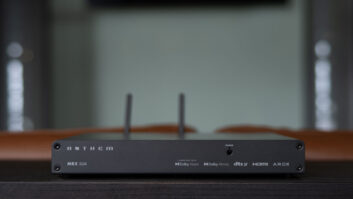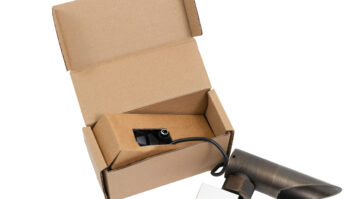As a general rule, I am not one that likes change. I like to float along in the same sea of comfortable, warm and cozy consistency of status quo. Slowly gliding down peaceful, familiar waters, doing similar, well-known, patterned things. If left to my own devices, I imagine there is at least an even odds chance that I would still be a golf pro, still living in the small apartment above the pro shop, still working six days a week. Miserable, and yet, somehow content in the numbing, yet comforting, sameness of it all.
Fortunately, I have Dana to push me forward towards progress in my personal life.
At work, however, I am partnered with someone who seems equally averse to change. Throwing out a 10 year old phone book might produce cries of, “That was one of my original ads! You’re throwing away a bit of our history!” In fact, work-John is usually the progressive one. The one willing to make changes and part ways with the past.
And I think that many smaller stores are very similar to ours in regards to that mentality; we do things because it is the way that we have always done them. And once we get settled into a routine, it isn’t easy to get us to bust out of it. This doesn’t mean we don’t adapt and change with the latest technology, or that we aren’t willing to embrace new ideas – after they’ve been proven, of course – but it means that we are slow to change certain business practices. We have never gone in for “amp of the month” mentality, where we run out and pick up the latest/hottest/trendiest product lines that happen to be making a news splash.
And this also means that we are likely to be fiercely loyal to a certain brand or – possibly – a rep once we have forged a relationship.
Case in point, we have one rep named Dave. Dave started doing business with us shortly after our store opened in ‘95. And over the years we’ve bought numerous lines from him. Sometimes Dave’s company would lose or drop a line for some reason or other, and we’d often roll over to the new line they brought aboard solely because of our relationship with Dave. Dave would say, “This is the new product line that I’ll be carrying and this is why I think it fits in with your business,” and – more often than not – we’d look at it and say, “OK, Dave.”
Because trust is a huge thing with a small business like ours, and when you develop a relationship that you trust, you tend to stick with it.
The thing is, getting in with a small business isn’t always easy. We’re resistant to change, we’re set in our ways, we like to leave our wheels in the comfortable ruts and just easily “blind drive” down the road. We have enough other things that we’re constantly in the midst of, and starting a new relationship – especially if we’re happy with our current status quo – isn’t always on the front burner.
But, the other thing is, when you DO get in, it’s like you’ve been accepted in The Family. We’re likely to be loyal to you, and to keep returning to you, and to continue doing business with you. Take care and continue doing right by us, handle any problems that may arise, treat us like we’re NOT a small business, and you’ve probably got our business for many years to come.
Basically, once you’ve got us, we’re probably yours to lose.
So when a salesperson comes in to a shop like ours, and they are offering something new, they need to have a really compelling reason to get us to change over from something that we’re already using. It can’t be just as good as a brand we’re currently using. It can’t be just as feature-filled or just as easy to program. And it can’t be a similar price to what we’re currently supporting. It needs to be a standout improvement.
Because change is hard.
And if you want us to change, we need to have something significantly better than “just as good” as what we currently have to make that switch.
This is even more so when it comes to a company deciding to make the switch to supporting a new control system.
For years our company was very loyal to one brand for our distributed audio systems. This company offered a ton of cool features at competitive pricing. Color touchscreens in three different sizes capable of showing full motion video? People loved it! So we kitted out our store in a full-demo system; a 6-zone audio/video distribution system featuring multiple touchpanels and a variety of other controls so we could walk a customer through all of the potential options of putting a system into their home. A doorbell with camera that would pop up on the touchscreens, paging and intercom, we showed it all. We sent our staff to trainings and bought multiple cases of the programming hardware so that all of our vans were equipped and prepared to install and service our systems.
And it paid off.
We ultimately worked our way to being one of the top dealers in the country.
Our entire team was comfortable with selling, designing, installing, programming and servicing these systems. And that is not a comfort that happens overnight amongst a staff of six people.
But, as technology advanced, and the world moved towards streaming and IP integration and automation became more commonplace and as iPad control was introduced and very quickly became de facto, we started losing jobs when bidding our old standby. Our systems were no longer as cool and up-to-date and no longer as competitive.
So, we examined what other bids/systems we were losing jobs to and why. Then we looked at the different systems on the market and weighed their plusses and minuses for our company. And only one of them came with a rep – Scott – that had been *tireless* (and I mean TIRELESS, patience of Job-level persistence here) in seeking and trying to win our business. And we decided to make a switch over to Control4.
That’s a simple phrase – “make a switch over to Control4” – but it carries with it a *massive* amount of investment in time and resources. It meant a shift in the way we spec’d and bid jobs. A change in how we wired. Sending staff up for training to learn the new product line and the programming methodology. Ripping out our store’s demo system and replacing it with a new Control4 one. Bringing in new inventory. Entering tons of new items into our accounting software. And then starting the slow process of getting our staff as comfortable with the new system as they were the old one.
But it was worth it, because we felt the change offered us major, significant improvement over what we had currently. Allowing us to not only be market-competitive again, but to branch away from mainly focusing on audio distribution and forging into automation and control; what we see as the real, sustaining future of this industry. (A Trojan Horse, if you will.)
When companies/reps come around our store offering some new control system, or a company launches a new system, it is going to take A LOT for us to get excited about it. And I’m sure there are a lot of other great systems out there from many other great companies. But they can’t offer performance and features and pricing that’s “just as good” as what we have.
Because we’re entrenched and invested in what we have. And why would we possibly make a major switchover to end up with something “just as good”?
For a small company, once you finally ramp up and switch over to supporting a new system, it can be a bit like trying to turn the Titanic around. And we all know how hard that was…







